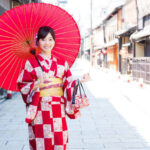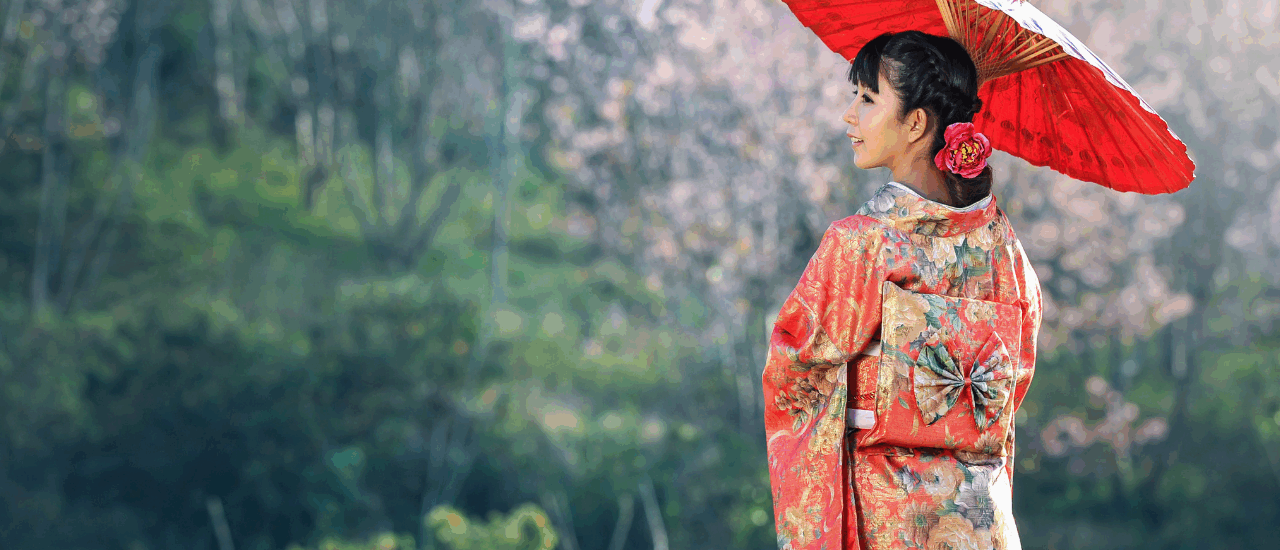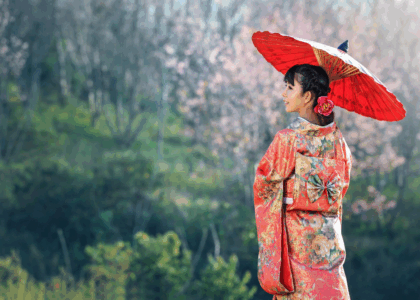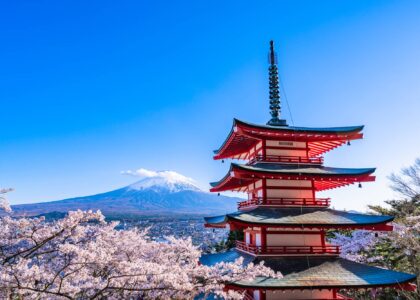The kimono is more than just clothing—it’s a traditional art form that carries the deep cultural essence of Japan. Whether during festivals, weddings, or travel experiences, wearing a kimono instantly immerses you in the elegance and refinement of Japanese culture. Today, let’s explore the proper way to wear a kimono and truly experience the beauty behind this iconic garment.

The Basic Components of a Kimono
There are many types of kimonos. The most common include:
- Furisode: Long-sleeved kimono typically worn by unmarried women
- Tomesode: Shorter-sleeved kimono worn by married women
- Yukata: A light, casual summer kimono
A full kimono outfit usually includes:
- Kimono body: The main garment
- Obi (belt): A wide, decorative sash that plays a central role in the look
- Tabi: Traditional white split-toe socks
- Geta or Zōri: Wooden or straw sandals worn with the kimono
Understanding these elements helps enhance your overall wearing experience.

Steps to Wearing a Kimono
Wearing a kimono involves a particular order and attention to detail. Here’s a basic guide:
- Undergarments: Start with special innerwear to maintain cleanliness and comfort.
- Kimono: Drape the kimono over your body. Be sure to overlap the left panel over the right. (Right over left is reserved for funerals.)
- Tie the Obi: Wrap the wide obi around your waist and tie it into a decorative knot. Beginners can try a simple bow.
- Adjust the Hem: Adjust the length of the kimono according to your height to keep it neat.
- Put on Tabi and Footwear: Finish the look with white tabi socks and geta sandals.
Tips for Wearing a Kimono Comfortably
- Don’t tie it too tightly—comfort and ease of movement are important.
- If it’s your first time, visit a professional rental shop where staff can dress you properly.
- Choose season-appropriate materials: yukata for summer, heavier fabrics for winter.
- Add subtle accessories like a small traditional handbag or hair ornaments to enhance the look.
Kimono Etiquette and Cultural Significance
Wearing a kimono is more than just dressing up—it’s a way to experience Japan’s traditional culture. Pay attention to your posture and movements: sit gracefully and move gently. Kimonos are often worn during cultural events like festivals, tea ceremonies, and weddings. When you wear one, you’re stepping into the rich history and beauty of Japan.
Putting on a kimono is like stepping through time, allowing you to feel the unique aesthetics and lifestyle of Japan. Whether it’s your first time or you’re looking for a deeper cultural experience, this traditional attire is absolutely worth trying.
5 Common Mistakes to Avoid on Your First Japan Trip
While immersing yourself in the beauty of Japanese culture is exciting, planning your trip wisely is just as important. In our next post, we’ll reveal the top 5 mistakes first-time travelers often make—and how to avoid them.



